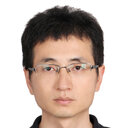A survey of trace metal burdens in increment cores from eastern cottonwood (Populus deltoides) across a childhood cancer cluster, Sandusky County, OH, USA.
Ключові слова
Анотація
A dendrochemical study of cottonwood trees (Populus deltoides) was conducted across a childhood cancer cluster in eastern Sandusky County (Ohio, USA). The justification for this study was that no satisfactory explanation has yet been put forward, despite extensive local surveys of aerosols, groundwater, and soil. Concentrations of eight trace metals were measured by ICP-MS in microwave-digested 5-year sections of increment cores, collected during 2012 and 2013. To determine whether the onset of the first cancer cases could be connected to an emergence of any of these contaminants, cores spanning the period 1970-2009 were taken from 51 trees of similar age, inside the cluster and in a control area to the west. The abundance of metals in cottonwood tree annual rings served as a proxy for their long-term, low-level accumulation from the same sources whereby exposure of the children may have occurred. A spatial analysis of cumulative metal burdens (lifetime accumulation in the tree) was performed to search for significant 'hotspots', employing a scan statistic with a mask of variable radius and center. For Cd, Cr, and Ni, circular hotspots were found that nearly coincide with the cancer cluster and are similar in size. No hotspots were found for Co, Cu, and Pb, while As and V were largely below method detection limits. Whereas our results do not implicate exposure to metals as a causative factor, we conclude that, after 1970, cottonwood trees have accumulated more Cd, Cr, and Ni, inside the childhood cancer cluster than elsewhere in Sandusky County.


